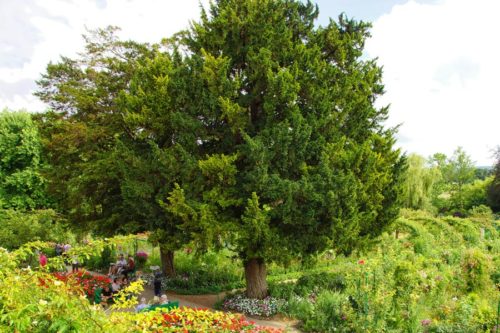You are supposed to visit Giverny in the spring- the wisteria and waterlilies are at their best then. But given the chance to visit in July I jumped at it.
Claude Monet settled there in 1883 with his wife and eight children and lived there until his death in 1926.
There are two parts to the garden , the beautiful multi coloured flower garden next to his house and the famous Japanese garden you get to by a tunnel under the road.
At first glance the flowers looked so crowded and random but if you look longer you realise how carefully placed they are. The shapes and colours are carefully chosen to give the impression of abandon but have been skillfully placed.
The Flower Garden
The Japanese Garden
in 1890 the Japanese garden was created by diverting river water to make a pond.
Monet planted the waterlilies and built a bridge so that he could paint them.
Trying to take a picture of the bridge without unwanted extras (tourists) is impossible but its lovely to walk around even through the crowds.
The house at Giverny was a fantastic surprise. I didn’t know that it is a museum and has been open to the public since its restoration. Its full of copies of Monet’s paintings but the best bits are the kitchen and the dining room, the kitchen has a huge range and blue tiles while the dining room is sunflower yellow with a huge table. I could definitely live there!
Upstairs the windows are open in the bedroom and we were allowed to take photos of the garden from it.
I could have stayed in the garden a lot longer than JP but he bore it bravely and we walked out of the garden and wandered down Rue Claude Monet to find refreshments .
We had coffee and apple pie before the journey back in a charming ultra trendy (read expensive) cafe.
You can visit the local churchyard where Monet is buried but really his garden is enough.










